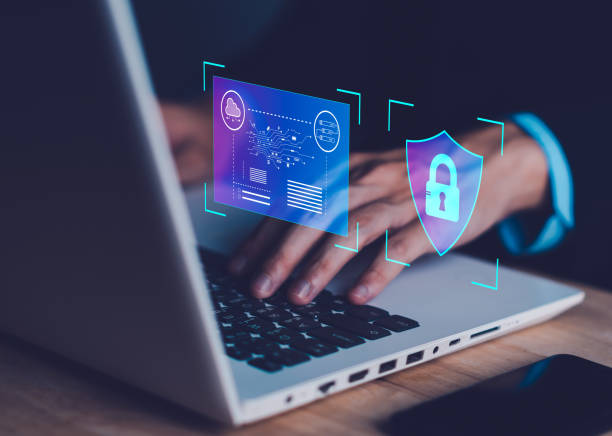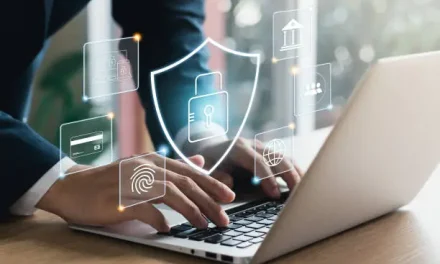In today’s digital world, both cybersecurity and IT security are critical to maintaining the integrity, confidentiality, and availability of sensitive data. However, there is often confusion about the difference between the two, as they are closely related but distinct fields. Understanding these differences is essential for businesses, individuals, and organizations to safeguard their digital assets effectively. In this article, we will explore the key aspects of both cybersecurity and IT security, examine their differences, and explain why it’s essential to understand the distinction.
What Is IT Security?
IT security, also known as Information Technology security, refers to the practices, tools, and policies implemented to protect the integrity of IT infrastructure. This includes the protection of hardware, software, and networks from unauthorized access, misuse, or damage. IT security encompasses a wide range of security measures designed to secure information systems, both from internal and external threats. It is primarily focused on safeguarding the IT infrastructure, ensuring that data and systems are safe from potential risks.
Common IT security measures include:
- Firewalls
- Encryption
- Anti-virus software
- Access control policies
- Intrusion detection and prevention systems
While IT security protects against unauthorized access and system breaches, it is not limited to online threats and can also focus on physical devices and access.

What Is Cybersecurity?
Cybersecurity refers specifically to the practice of protecting digital assets, including networks, systems, and data, from online threats such as hacking, malware, and cyber-attacks. Cybersecurity focuses on the protection of information in the digital world, primarily concerned with threats that originate from the internet. The aim of cybersecurity is to prevent data breaches, protect sensitive information, and mitigate risks associated with cyber-attacks.
Key aspects of cybersecurity include:
- Network security
- Application security
- Endpoint protection (devices like laptops, smartphones, etc.)
- Data protection and encryption
- Incident response and recovery
- Cyber threat intelligence
Cybersecurity is crucial for businesses and organizations to protect their online presence, ensuring that systems and data are secure from evolving cyber threats.

Key Differences Between IT Security and Cybersecurity
While IT security and cybersecurity overlap in many areas, they have distinct focuses:
- Scope: IT security is broader, covering physical and digital protection of IT infrastructure, whereas cybersecurity is specifically concerned with online and digital threats.
- Focus Area: IT security focuses on securing both hardware and software infrastructure, including network security, physical devices, and access control. Cybersecurity, on the other hand, is primarily focused on protecting data and systems from cyber threats such as hacking, phishing, and malware.
- Threat Landscape: IT security handles a wider range of threats, including natural disasters, insider threats, and unauthorized access, whereas cybersecurity mainly addresses cyber-attacks, data breaches, and cybercrimes.
- Tools and Techniques: Both fields use similar tools, such as firewalls and encryption, but cybersecurity often employs more specialized technologies like threat intelligence and security monitoring tools to defend against evolving cyber threats.
Scope of IT Security and Cybersecurity
IT Security has a broader scope as it involves the protection of an organization’s IT infrastructure—both physical and digital. It encompasses securing:
- Servers and networks to ensure they are protected from unauthorized access and damage.
- Devices such as computers, smartphones, and other endpoints.
- Data stored on physical or digital media.
Cybersecurity, however, is more specialized in the digital domain. It focuses on securing:
- Networks and systems from cyber-attacks.
- Data transmitted or stored electronically, ensuring it’s not intercepted or accessed by unauthorized parties.
- Online applications and services, including cloud-based services and websites.

Approaches Used in IT Security and Cybersecurity
The approaches in IT security and cybersecurity often overlap, but there are differences in how they are applied:
- IT Security: The approach involves a multi-layered defense, including physical access control, network protection, and securing hardware. It uses strategies like risk management, access control, data integrity checks, and physical security measures to mitigate risks.
- Cybersecurity: Cybersecurity focuses more on identifying vulnerabilities in online systems and proactively protecting against cyber-attacks. This includes penetration testing, network monitoring, threat intelligence analysis, and the use of advanced security software to detect and respond to emerging threats.
Why Understanding the Difference Is Important
Understanding the difference between cybersecurity and IT security is crucial because it allows businesses and organizations to develop more effective security strategies. While both fields work together to protect data and assets, their different focuses and approaches mean that a comprehensive security plan should integrate both aspects. With the increasing complexity of cyber threats, having a clear understanding of these terms will help ensure that the right protections are in place, addressing both digital and physical threats effectively.
Conclusion
In conclusion, the distinction between cybersecurity and IT security is important for understanding the comprehensive approach to protecting an organization’s digital and physical assets. Cybersecurity vs IT Security is more than just a comparison of terms—it’s a matter of developing strategies that address the unique threats each field confronts. Both are integral to safeguarding your information, and understanding their roles is crucial for comprehensive protection.
As you explore cybersecurity and IT security for your organization, keep in mind that marketing technology plays a significant role in ensuring that your online presence is optimized. SEO services and content marketing are essential tools that can help protect your brand’s reputation by preventing cyber threats, ensuring your website and online content remain secure and accessible. Contact us now!

Frequently Asked Questions:
1. How are IT and cybersecurity related?
IT security and cybersecurity are closely related as both focus on protecting an organization’s assets. While IT security is broader and includes physical and digital protection of infrastructure, cybersecurity is specifically focused on securing online data and defending against digital threats.
2. Is IT security part of cybersecurity?
While IT security encompasses a wide range of protection measures for both physical and digital infrastructure, cybersecurity is a specialized branch that deals specifically with protecting digital information and defending against cyber-attacks. They complement each other but are distinct fields.
3. How is cybersecurity different from networking and security?
Cybersecurity focuses on protecting digital systems from external cyber-attacks, while networking and security cover the broader concepts of managing and securing computer networks. Networking security is part of cybersecurity, but cybersecurity also extends to safeguarding data, applications, and digital interactions.





